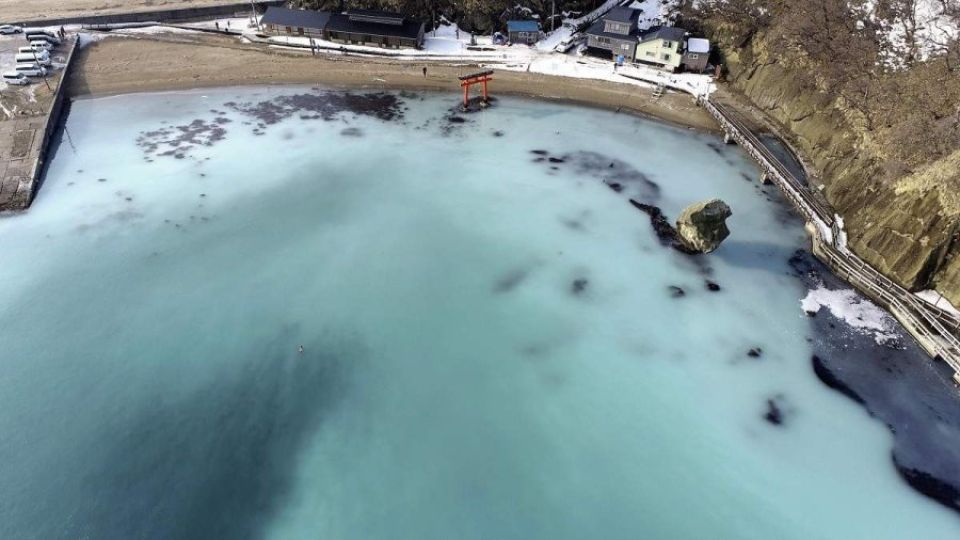May 26, 2023
TOKYO – Large schools of Pacific herrings are making comeback on Hokkaido’s Sea of Japan coast, thanks to efforts by local organizations and fishermen.
In multiple locations in the area, Pacific herrings are observed spawning near shore in such large schools that they turn the ocean milk-white — a phenomenon known as “kuki.”
After the end of World War II, the phenomenon was no longer seen due to a drastic decline in the Pacific herring population.
But it has begun to be widely witnessed again in recent years thanks to efforts such as a project to release herring fry in the area. Kuki is showing signs of making a comeback as a special feature of the spring in Hokkaido.
Mysterious white ocean
At Sandomari Port in the city of Rumoi, Hokkaido, the ocean was colored milk-white on May 6. People were seen catching Pacific herrings as much as 30 centimeters long one after another.
According to the city government and others, the phenomenon of kuki, which came to be barely witnessed soon after the end of World War II, has been observed again every year since 2020.
Kuki is a phenomenon in which a school of Pacific herrings swarms to the shallows along the coastline for spawning. As a result of the male herrings releasing their milt, or fish semen, all at the same time, the seawater turns cloudy.
This year, the phenomenon has been witnessed in at least 11 cities and towns along the Sea of Japan in Hokkaido through April. It was observed multiple times in some of these municipalities.
“As it has come to be more frequently observed, not all cases are reported recently,” said an official of the Hokkaido Research Organization’s Central Fisheries Research Institute.
Pacific herring fishing reached its peak in the early 20th century, from the end of Meiji period (1868-1912) to the Taisho period (1912-1926). Back then, 1 million tons of Pacific herring was reportedly caught in Hokkaido each year. Luxurious houses, dubbed “herring palaces,” were built across Hokkaido with revenues from fishing. But the fish had reportedly all but disappeared by the mid-1950s due to overfishing and changes in the marine environment.
Fishermen’s efforts paid off
The backdrop of kuki’s return is an increase in the number of Pacific herring. The haul of Pacific herring in areas along the Sea of Japan in Hokkaido was around 200 tons to 300 tons a year in the first half of the 2000s, but the number has since been on the increase, topping 2,000 tons in 2009. The catch reached 5,326 tons in 2022, the highest figure in the pas 20 years. This year, 4,592 tons of the fish had already been caught through the end of April.
The Central Fisheries Research Institute believes that various changes in the marine environment, such as water temperatures and the amount of plankton, on which the fish feed, have helped increase the herring population. The institute believes that fishermen’s efforts also paid off. They used fishing nets with bigger mesh so as not to catch fish that were too young, and they also shortened the fishing season.
Commissioned by the Hokkaido prefectural government, the Hokkaido Aquaculture Promotion Corporation started a project in fiscal 1996 to release Pacific herring fry in areas along the Sea of Japan. In recent years, it has been releasing 3.4 million fry a year.
“The number of fish is becoming stable, and the kuki phenomenon can now be observed,” said an official of the corporation’s aquaculture promotion department. “We hope this will also lead to increasing fishermen’s revenues.”

